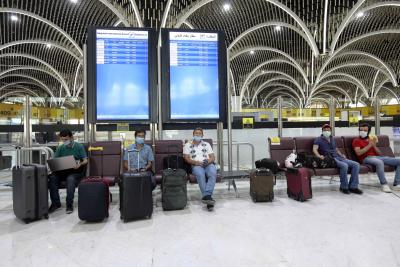Elitist to Essential: Covid intensified aviation's role in India
By IANS | Published: March 22, 2021 07:20 PM2021-03-22T19:20:01+5:302021-03-22T19:30:07+5:30
New Delhi, March 22 The Covid-19 pandemic not only battered and bruised India's civil aviation sector, but it ...

Elitist to Essential: Covid intensified aviation's role in India
New Delhi, March 22 The Covid-19 pandemic not only battered and bruised India's civil aviation sector, but it also changed the entire perception of the industry from an elitist to an essential mode of transportation.
Initially, the sector, which was locked down to contain the spread of the infection, was faced with survival issues with airlines reducing pay cheques and sending employees on mandatory unpaid leaves.
Similarly, at the global level, many airlines downsized and waited for the government's rescue measures.
In India's context, prior to the calibrated re-opening, the entire ecosystem comprising policy makers, regulator, airlines and airports got engaged to herald the world's largest evacuation programme.
The 'Vandhe Bharat' mission's aerial arm became the only hope for millions of people who were stranded abroad and wanted to travel back to India. Notably, India commenced the mission in May 2020 to bring back its stranded citizens from overseas.
The plan had originally envisaged to bring back more than 190,000 Indian nationals. At present, the evacuation programme has brought back over 6.7 million people from abroad.
Besides evacuation flights, massive PPE cargo operations as well as facilitation of exports, including agricultural produce, were undertaken.
From the belly space to cargo-on-seat, freight, especially medical equipment, was hauled with a war like zeal. Nearly all domestic airlines entered the frantic race to evacuate passengers and deliver more cargo.
Soon hauling cargo became the new norm, from PPE kits to anti-Covid vaccines, changing the perception of India's aviation sector.
Consequently, the airlines flew to newer destinations, expanding the horizons of future growth potential.
Furthermore, India entered into 'Air Bubble' agreements with other countries. This special arrangement mandates certain prerequisites along with permissions which are needed for passengers to undertake travel. However, regular scheduled services are still some time away.
On the domestic front, the graded capacity addition as well as fareband aided the passengers and airlines to wade-off financial turbulence and ticket inflation.
Additionally, more cities were connected as the network densified. Places like Bareilly, Durgapur, Rajkot and Darbhanga were added to the civil aviation map.
In terms of traffic, the one-way passenger movement is slowly converting into VFR
( With inputs from IANS )
Disclaimer: This post has been auto-published from an agency feed without any modifications to the text and has not been reviewed by an editor
Open in app